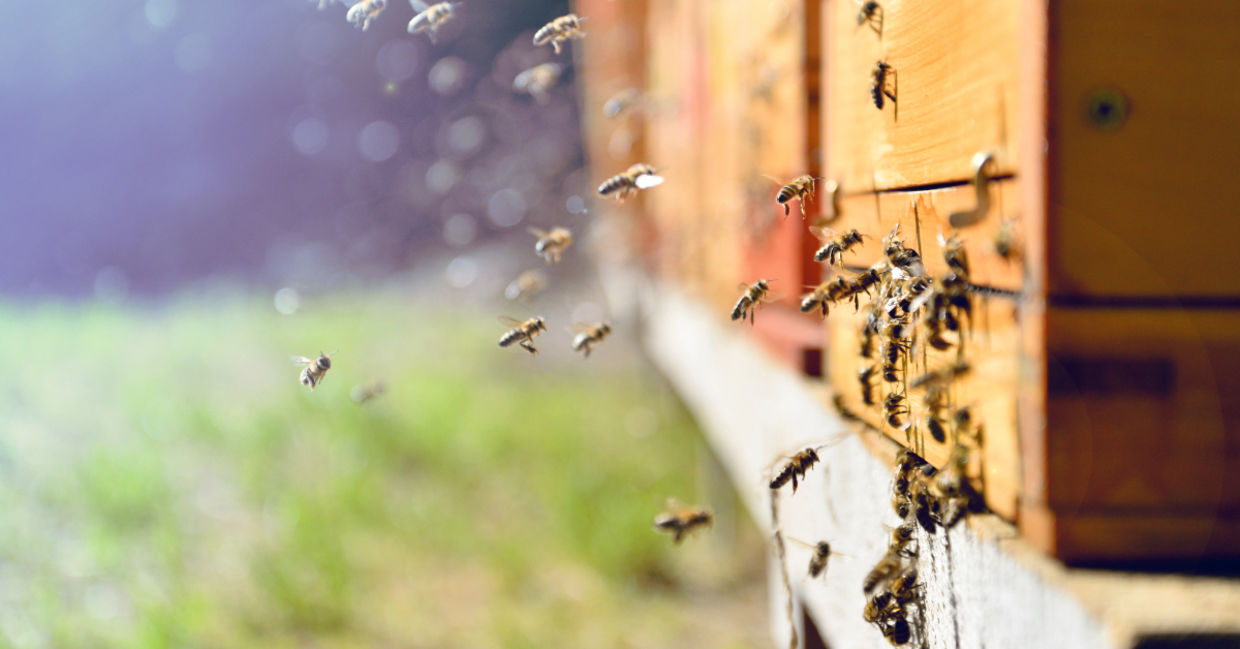
(Sushaaa / Shutterstock.com)
A robotic beehive, a robotic dancing bee, and a vibrating beehive: all of these may soon be coming to a bee colony near you. However, these are more than just cool little gadgets; robots may be key to revitalizing the bee population.
Declining Populations
Insect populations are declining all over the world due to pesticides and habitat loss, reported NPR. In fact, 40 percent of all species are declining globally and more than one-third are considered endangered.
While people may not miss mosquitos or cockroaches, this decline has to be taken seriously because pollinators, especially bees are also threatened.
It was the absence of insects that disturbed Dr Thomas Schmickl, an Austrian biologist who was spending a year at East Tennessee State University. One day in 2007, while walking across fields to class, he realized that he didn’t hear a single bumblebee, according to MIT Technology Review.
Schmickl , who currently leads the Artificial Life Lab at the University of Graz in Austria is now focusing on bees and how to save them. He believes that coming to their aid can help save ecosystems. Schmickl’s research team has been working on an EU funded project called Hiveopolis. According to their website, they are creating robotic, interactive hives to help the bee population cope with issues such as climate change, parasites, pesticides, and more.
View this post on Instagram
According to Inverse , each hive is outfitted with thermal sensors, heating implements, and a control panel. Using these tools, the researchers were able to monitor 4,000 bees from late 2020 to early 2021. When cold weather nearly killed off the bee colony, they were able to heat the hive and save the bees.
A Dancing Bee Robot
In addition to the interactive hives, according to the MIT Technology Review, Hiveopolis is also working on creating a little bee robot that can recreate the movements of the “waggle dance” that bees dance when they return to the hive after foraging for pollen. The movements of the dance serve as a map for the bees that remained in the hive so that they too can find their way to the source of food.
The hope is that the waggle dance robot could guide bees away from harmful food sites, such as those that have been sprayed with pesticides, and towards safer food sources.
Conversely, the researchers have also created a system that can learn to read the bees’ waggle dances and use that information to map out where the bees had been finding their food. This could help researchers map sites that are safe for bees to use versus those that are unsafe.
While these ideas have not been lab tested yet and it is still unclear how all this technology will be used by professional beekeepers. What is clear is that these innovations go a long way in terms of the ability to understand how bee colonies work and the factors that determine their survival. And when it comes down to it, human survival is dependent on the survival of bees and insects everywhere.
YOU MIGHT ALSO LIKE:
Bus Stop Gardens Bring Bees Back to Cities
New Study Shows Bees Learn From One Another
Do You Know These Fun Facts About Bees? [Quiz]







